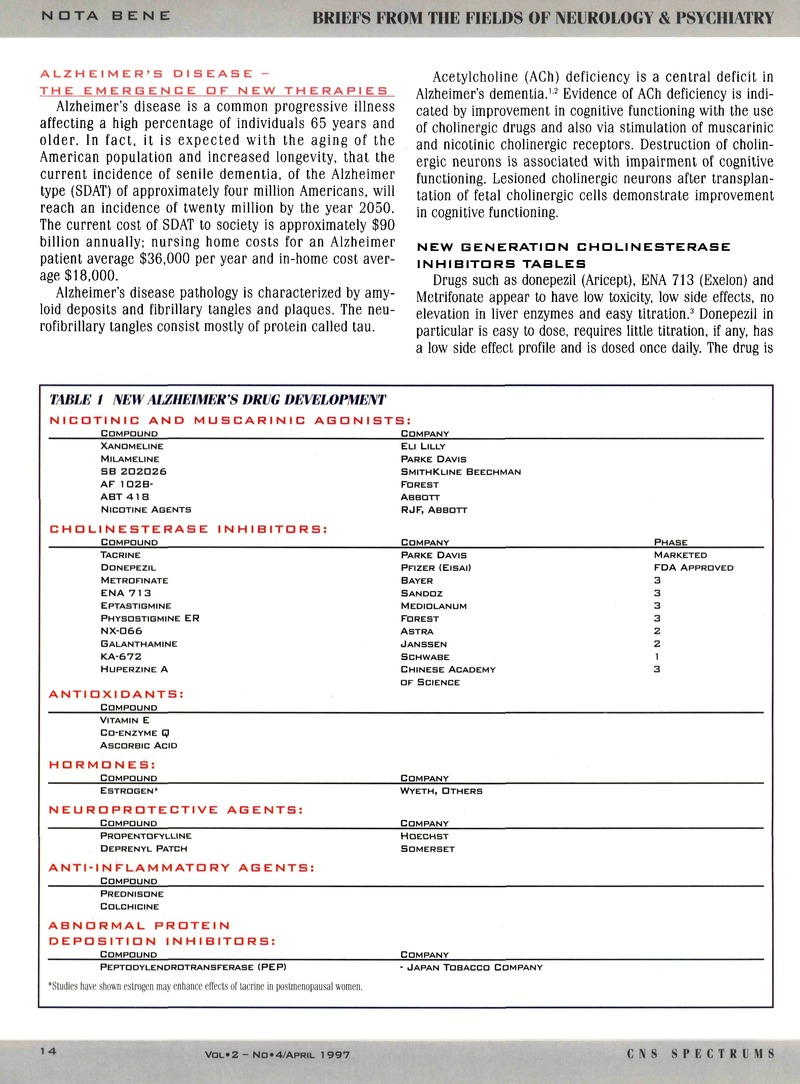No CrossRef data available.
Article contents
Briefs from the Fields of Neurology & Psychiatry
Published online by Cambridge University Press: 07 November 2014
Abstract
An abstract is not available for this content so a preview has been provided. Please use the Get access link above for information on how to access this content.

- Type
- Nota Bene
- Information
- Copyright
- Copyright © Cambridge University Press 1997
References
1.Giacobini, E.Cholinomimetic Therapy of Alzheimer's Disease: does it slow down deterioration? In: Racagni, G, Brunello, N.Langer, SZ, eds. Recent advances in the treatment of neurodegenerative disorders and cognitive dysfunction. New York: International Academy of Biomedical Drug Research. 1994;7(23):51–57.Google Scholar
2.Schneider, LS.Clinical pharmacology of aminoacridines in Alzheimer's disease. Neurology. 1993;43(supp 14):S64–S79.Google Scholar
3.Becker, RE, et al.The second generation of cholinesterase inhibitors: clinical and pharmacological effects. In: Giacobini, E, Becker, R, eds. Cholinergic basis for Alzheimer therapy. Boston: Birkhauser; 1991:263–296.Google Scholar
4.Maelicke, A, Albuquerque, E. New approach to drug therapy in Alzheimer's dementia. Drug Discov today. 1996; 1:53–59.Google Scholar
5.Mori, F, et al.Cholinesterase inhibitors increase secretion of APPs in rat brain cortex. Neuro Report. 1995;6:663–696.Google Scholar
6.Schneider, LS, Olin, J, Pawluczyk, S. A double-blind crossover pilot study of a combination with cholinesterase inhibitor in Alzheimer's disease. Am J Psychiatry. 1993;150:321–323.Google ScholarPubMed




